波士顿大图:日本持续危机中 | | 时间:2011-03-17 09:55:18 来源:boston.com 作者: |
As if conditions for survivors and emergency workers weren't bad enough after the massive earthquake and tsunami, snow fell today in chilly Northern Japan. The dire situation prompted the first-ever televised address to the nation from Emperor Akihito, who made no such speech even after the Kobe earthquake in 1995. As aid and personnel poured into Japan, the nuclear crisis prompted neighboring countries to step up inspections of Japanese foods, and prompted governments worldwide to study their own nuclear energy policies. Meanwhile the grim work of recovery continued. -- Lane Turner ( 28 photos total) 
Vehicle headlamps illuminate the disaster area of Yamada town in Iwate prefecture on March 16. The official toll of the dead and missing following a devastating earthquake and tsunami that flattened Japan's northeast coast has topped 11,000, with 3,676 confirmed dead. (STR/AFP/Getty Images)

Yukie Ito (left), tries to comfort her daughter Hana, 8, with grandmother Tamiyo at a cold refugee center for the homeless March 16 in Kesennuma, Miyagi province. (Paula Bronstein/Getty Images) #

Rishiko reacts after visiting her home in the rubble of a village destroyed by the devastating earthquake and tsunami March 16 in Kesennuma, Miyagi province. (Paula Bronstein/Getty Images) #

In this handout image provided by the U.S. Air Force, a house is seen adrift off the coast of northeastern Japan from a HH-60G helicopter surveying the damage stricken area as part of Japan's earthquake and tsunami recovery effort March 14. (U.S. Air Force via Getty Images) #

Elderly people drink hot tea at a shelter at Yamada town in Iwate prefecture on March 16. (STR/AFP/Getty Images) #
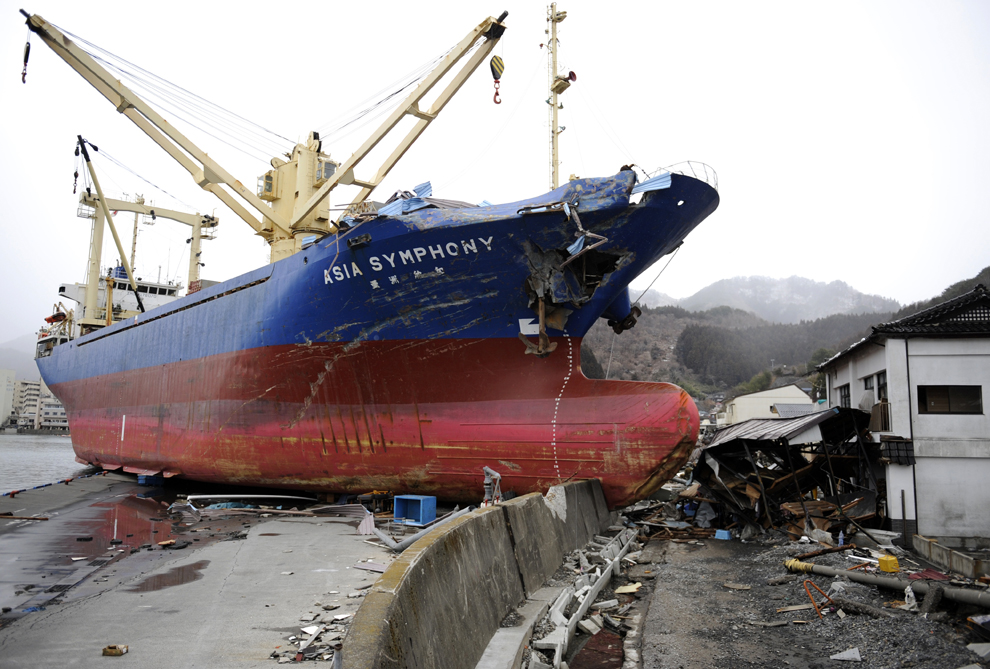
The 4,724-ton freighter M.V. Asia Symphony lies on a pier after being hit by the tsunami at the port in Kamaishi city, Iwate prefecture on March 16. All 17 Filipino crew (next picture) are safe and living at an emergency shelter near the port. (Toshifumi Kitamura/AFP/Getty Images) #
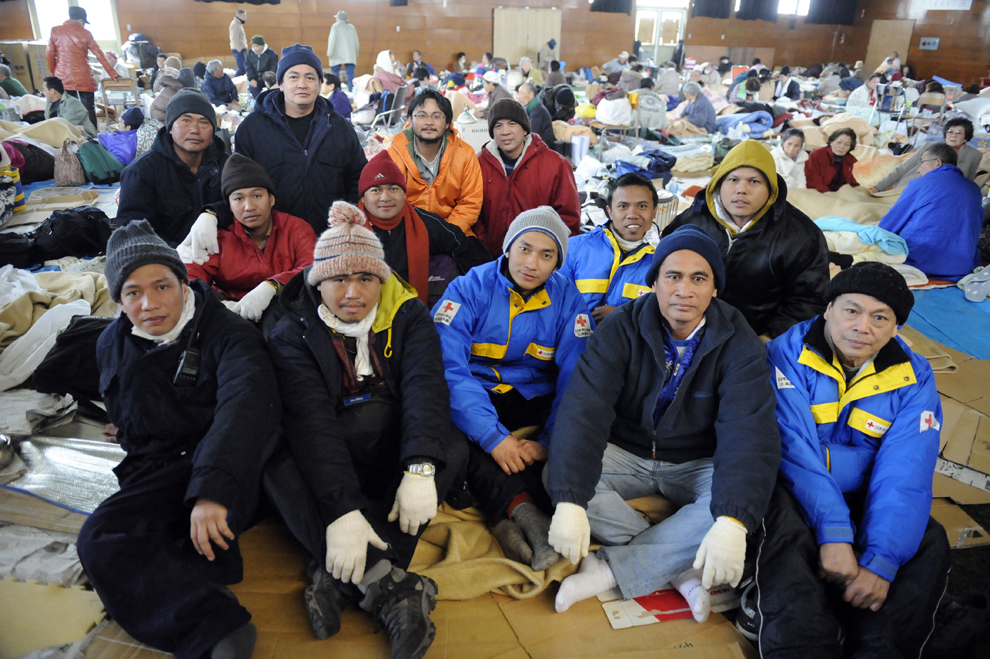
A Filipino freighter crew sits in a shelter in Kamaishi city, Iwate prefecture on March 16. Their ship M.V. Asia Symphony (previous picture) was carried onto the pier after being hit by the tsunami. (Toshifumi Kitamura/AFP/Getty Images) #

Japanese Defense Force members load tsunami relief goods at the port in Kamaishi city, Iwate prefecture on March 16. (Toshifumi Kitamura/AFP/Getty Images) #

Survivors of the March 11 earthquake and tsunami that devastated the eastern coast of Japan rest in the Miyako Shogako school sports hall, used as a shelter for evacuees, in Miyako town on March 16. (Roslan Rahman/AFP/Getty Images) #
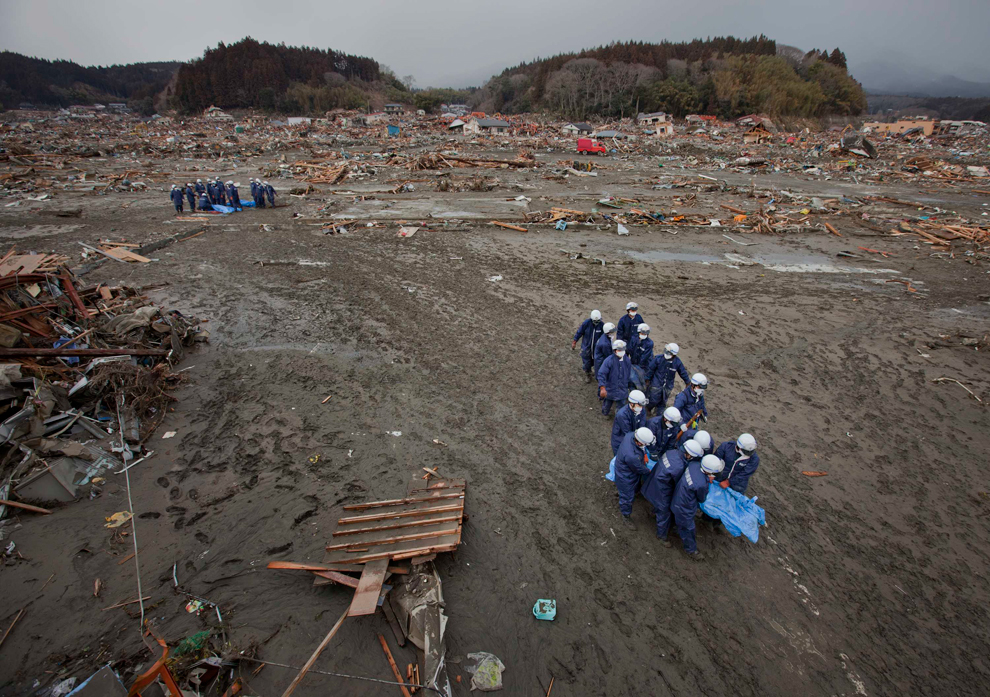
Policemen carry the bodies of victims retrieved from the debris in Rikuzentakata, Iwate Prefecture, days after the area was devastated by a magnitude 9.0 earthquake and tsunami on March 16. (Adrees Latif/Reuters) #
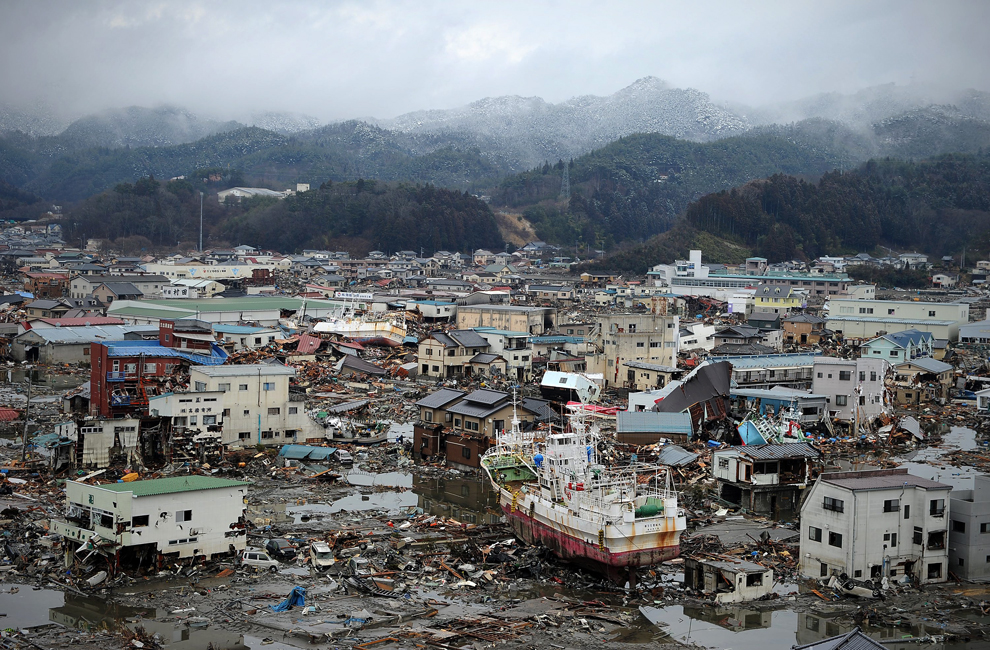
Damage caused by the March 11 earthquake and tsunami is seen from a hill overlooking the city of Kesennuma on March 16. (Philippe Lopez/AFP/Getty Images) #
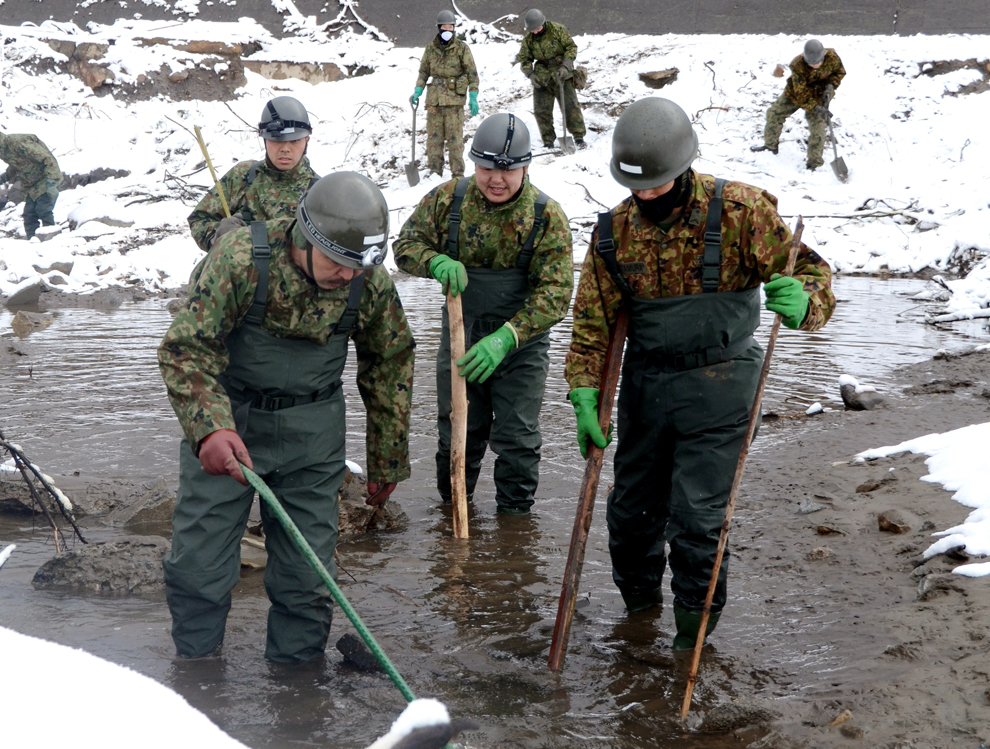
Japanese Self Defence Force soldiers search for people missing from the March 11 earthquake and tsunami in a river bed in Miyako in Iwate prefecture on March 16. (Takashi Noguchi/AFP/Getty Images) #
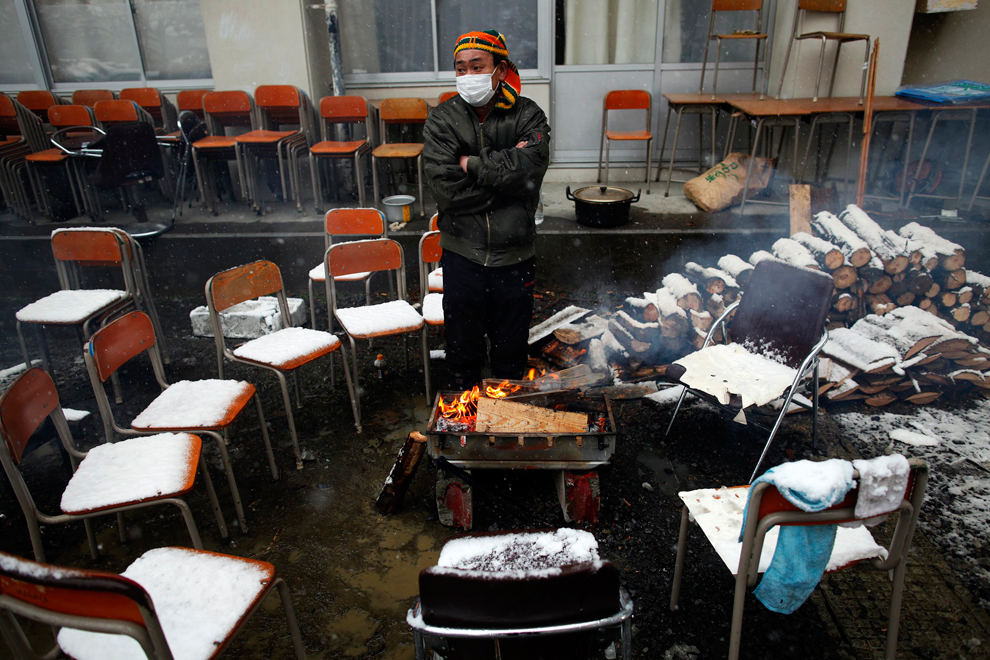
A survivor warms himself by a fire at an emergency shelter in Otsuchi March 16. In the fishing town of Otsuchi in Iwate prefecture, 12,000 out of a population of 15,000 have disappeared following Friday's massive earthquake and tsunami. (Damir Sagolj/Reuters) #

A doll lies on the ground after the March 11 tsunami and earthquake in Natori in Miyagi Prefecture on March 16. (Toru Yamanaka/AFP/Getty Images) #
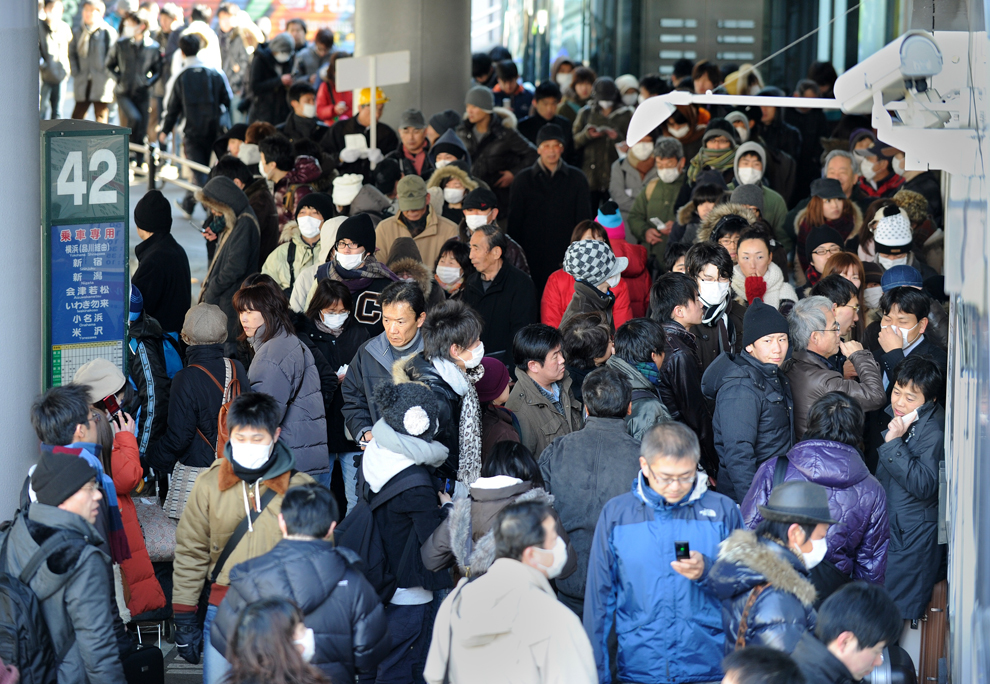
People crowd a long-distance bus terminal in front of Sendai Railway Station to leave the earthquake and tsunami-hit town of Sendai, Miyagi Prefecture, on March 16. Railway services have been cancelled since the earthquakes around the area. (Toru Yamanaka/AFP/Getty Images) #
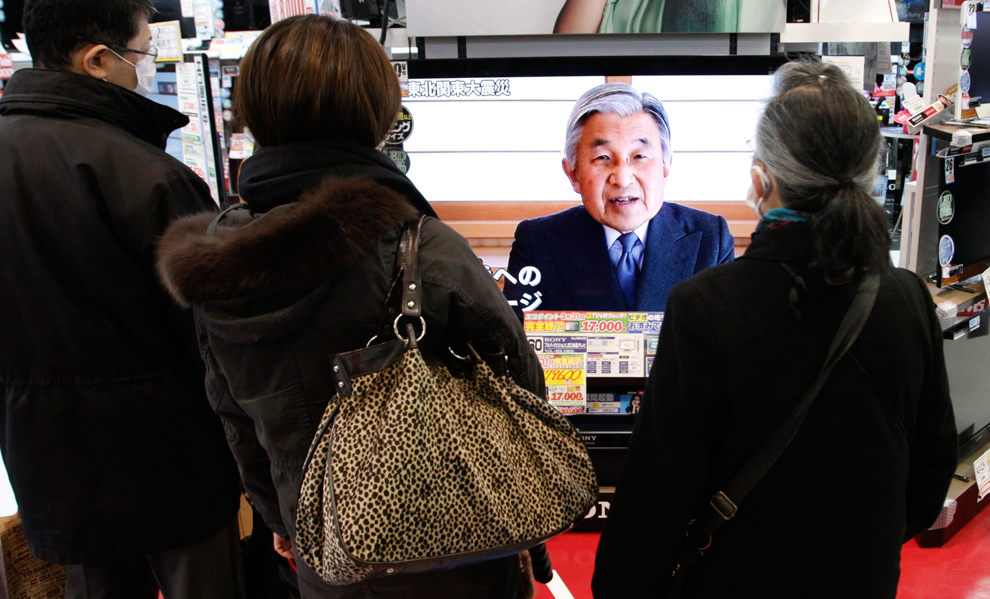
People watch a television broadcasting Japan's Emperor Akihito's televised address to the nation at an electronics retail store in Tokyo March 16. Japanese Emperor Akihito said on Wednesday that problems at Japan's nuclear-power reactors were unpredictable and he was "deeply worried" following an earthquake he described as "unprecedented in scale". It was an extraordinarily rare appearance by the emperor and his first public comments since last week's devastating earthquake and tsunami that killed thousands of people. (Issei Kato/Reuters) #

A man checks a list of evacuated people at a shelter in Rikuzentakada, in Iwate prefecture, on March 16. (STR/AFP/Getty Images) #
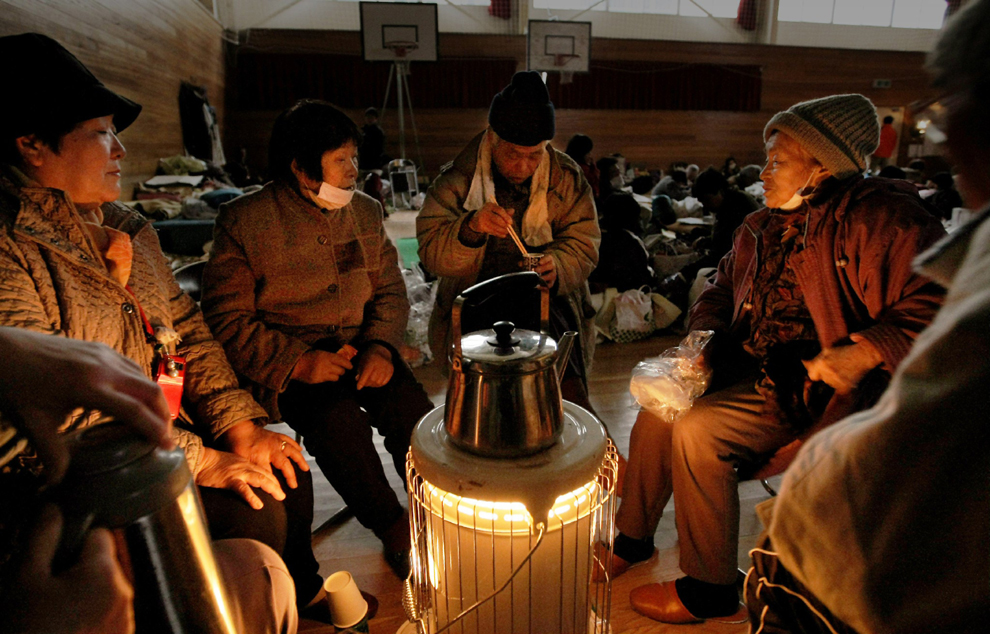
People stay close to the heater at a shelter at Yamada town in Iwate prefecture on March 16. (STR/AFP/Getty Images) #
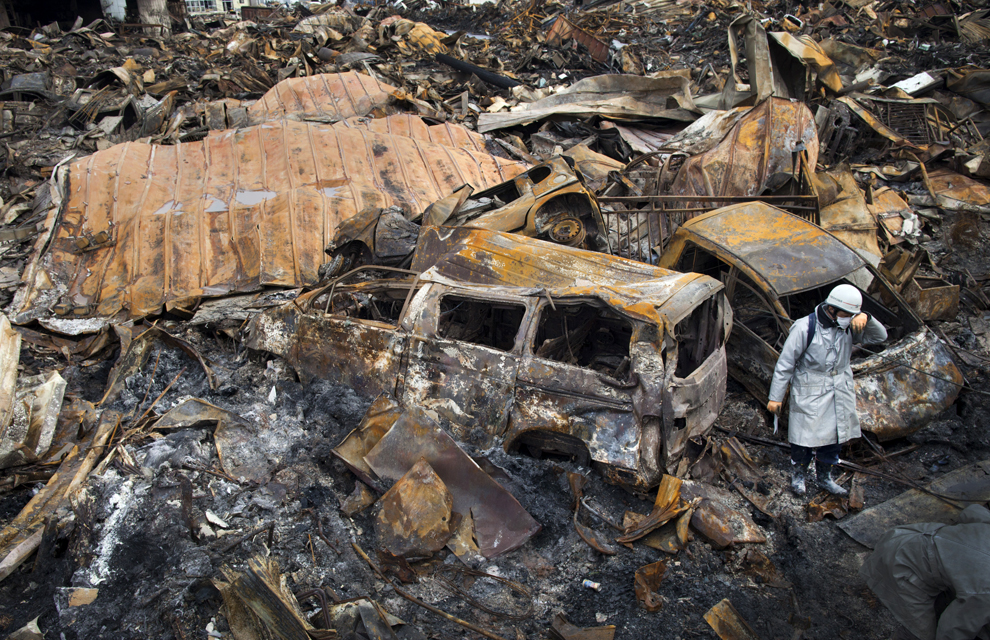
A rescue worker wipes his forehead after carrying a body from the rubble of a village destroyed by the devastating earthquake, fires and tsunami March 16, 2011 in Kesennuma, Miyagi province. (Paula Bronstein/Getty Images) #

Chieko Chiba walks through the rubble after going to see her destroyed home March 16, 2011 in Kesennuma, Miyagi province. (Paula Bronstein/Getty Images) #
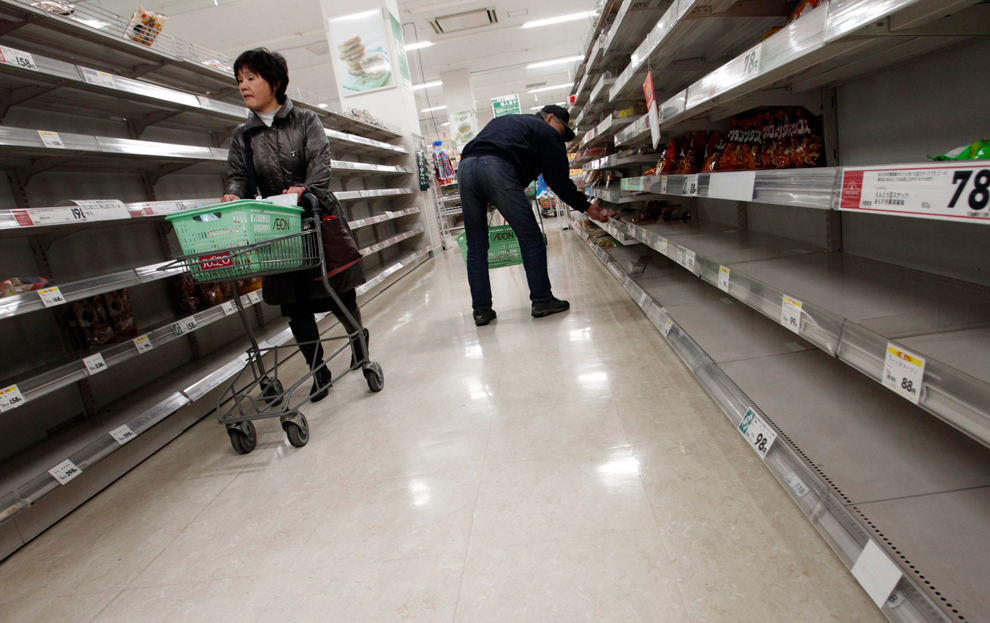
People shop for food at a big-box supermarket in Tokyo March 16. Public trust in the Japanese government faces its biggest test since WWII over the handling of the nation's nuclear crisis, raising concerns that a breakdown in confidence could fuel panic and chaos if appeals for calm go unheeded. Foreigners are leaving Tokyo, or shutting themselves indoors, and supermarket shelves are running empty despite authorities assuring citizens there is no need to panic from the crisis unfolding at a quake-stricken nuclear power plant. (Issei Kato/Reuters) #
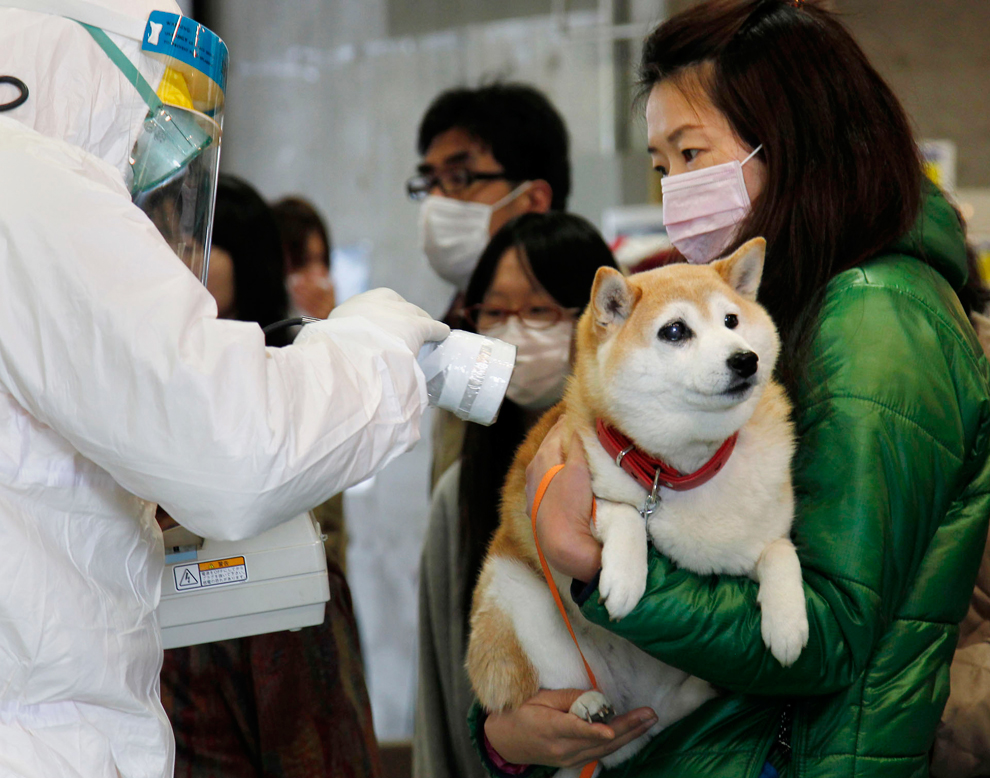
An official in a full radiation protection suit scans an evacuated woman and her dog with a geiger counter in Koriyama city in Fukushima prefecture, about 60km west from the crisis-hit Tokyo Electric Power Co (TEPCO) Fukushima Nuclear plant, on March 16, 2011. A fresh fire broke out at the quake-hit Japanese atomic power plant in Fukushima early on March 16. (Ken Shimizu/AFP/Getty Images) #
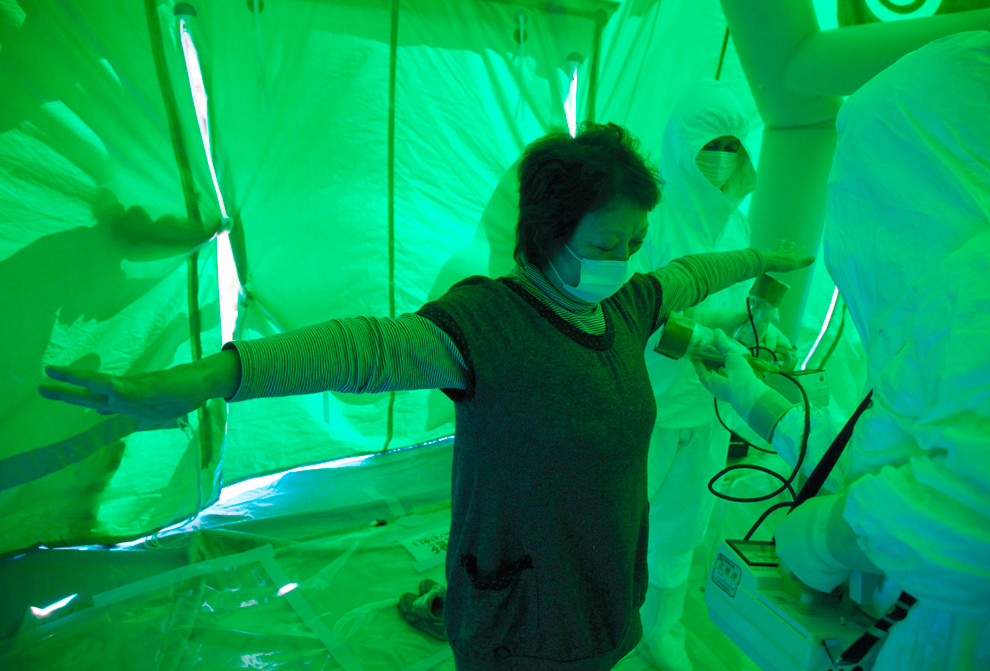
Medical staff use a Geiger counter to screen a woman for possible radiation exposure at a public welfare center in Hitachi City, Ibaraki, March 16, after she was evacuated from an area within a 12.4 mile radius of the Fukushima Daiichi nuclear plant. (Asahi Shimbun/Reuters) #
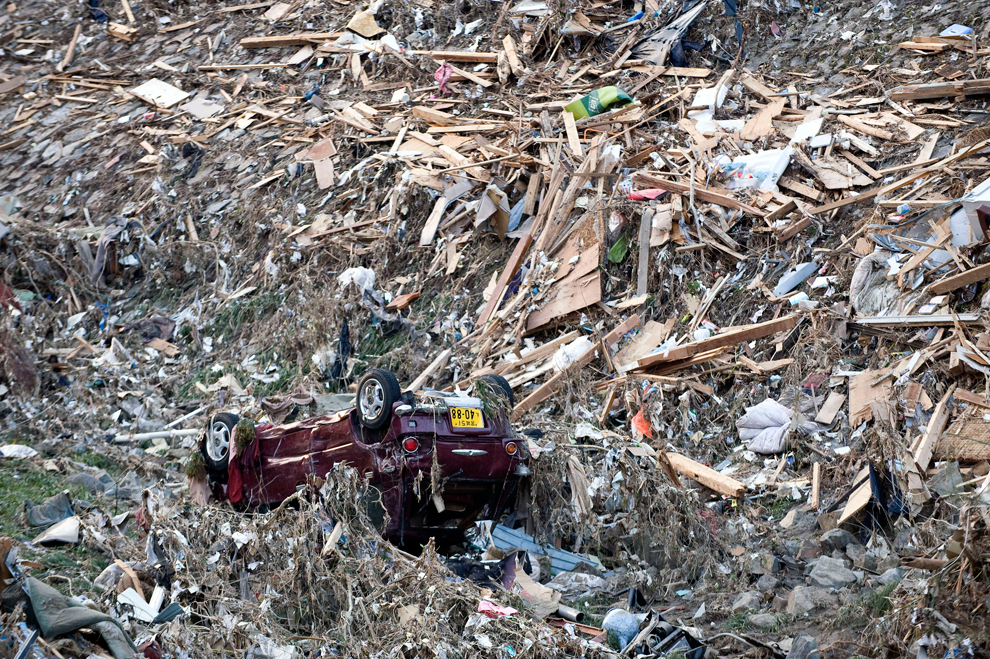
A car lies among debris swept inland by the tsunami following the earthquake in Minami Sanriku, Miyagi prefecture. (Robert Gilhooly/Bloomberg) #
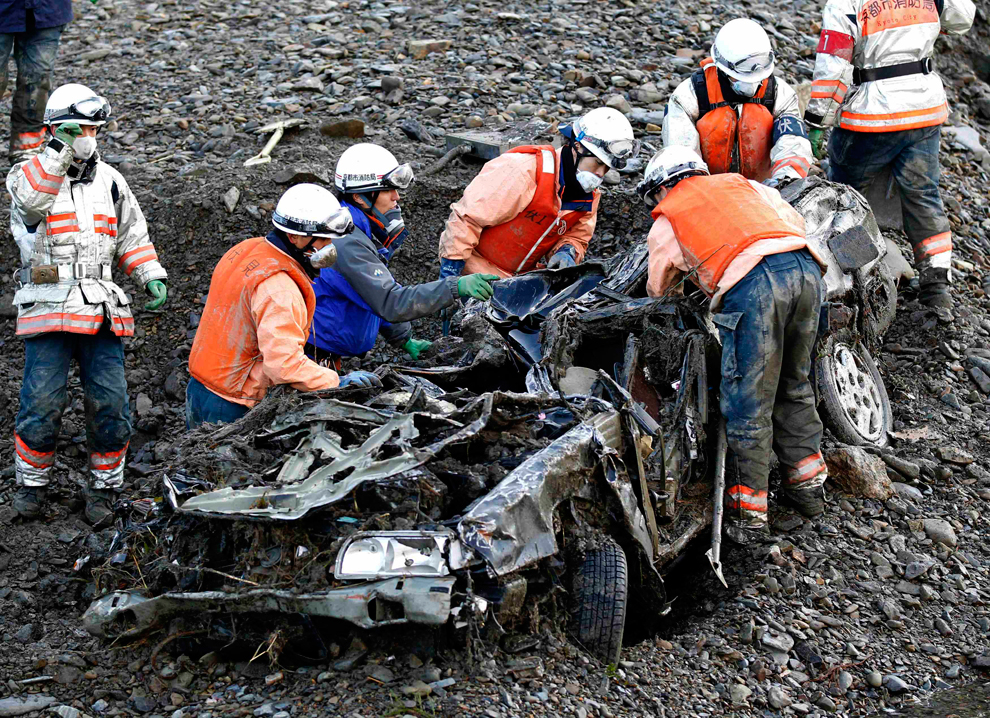
Rescue workers search for a body after digging a car out of the debris in Minamisanriku town, Miyagi Prefecture, March 16. (Kim Kyung-Hoon/Reuters) #
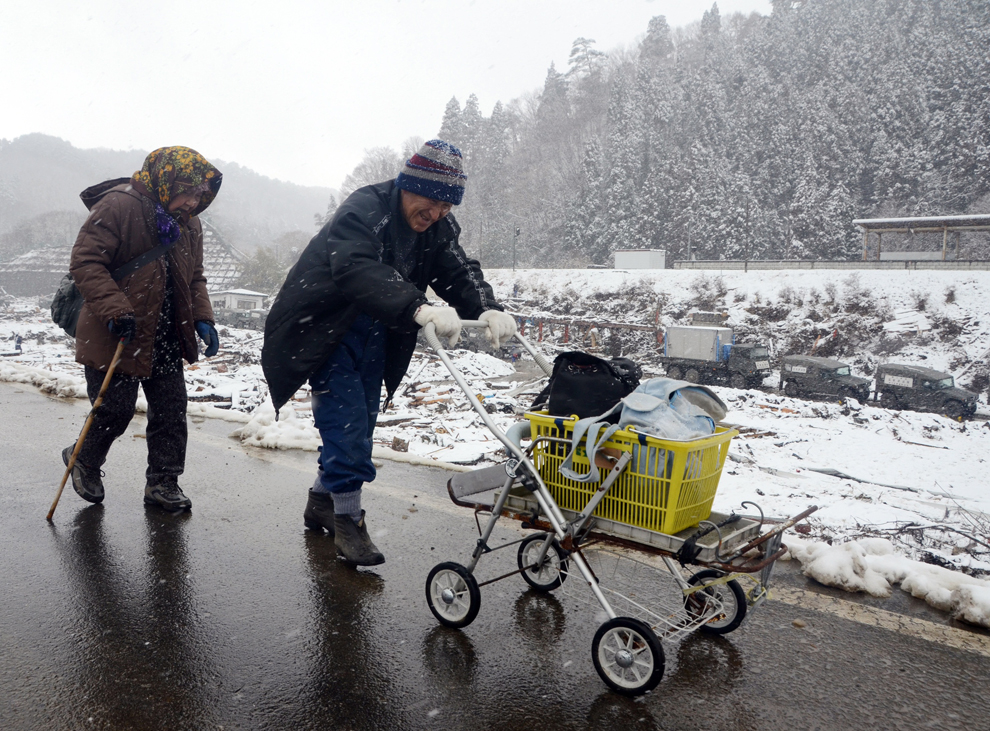
An elderly man and woman push a cart carrying their salvaged belongings in Miyako, in Iwate prefecture, on March 16. (Takashi Noguchi/AFP/Getty Images) #
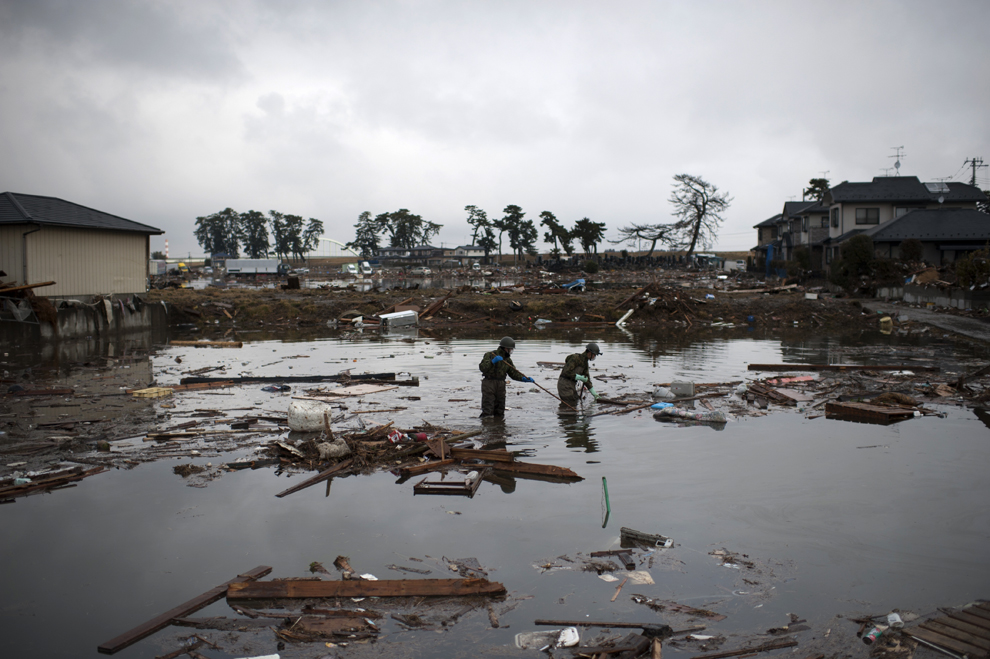
Japanese soldiers check for bodies in the water in Sendai, Miyagi prefecture, on March 16. (Fred Dufour/AFP/Getty Images) #
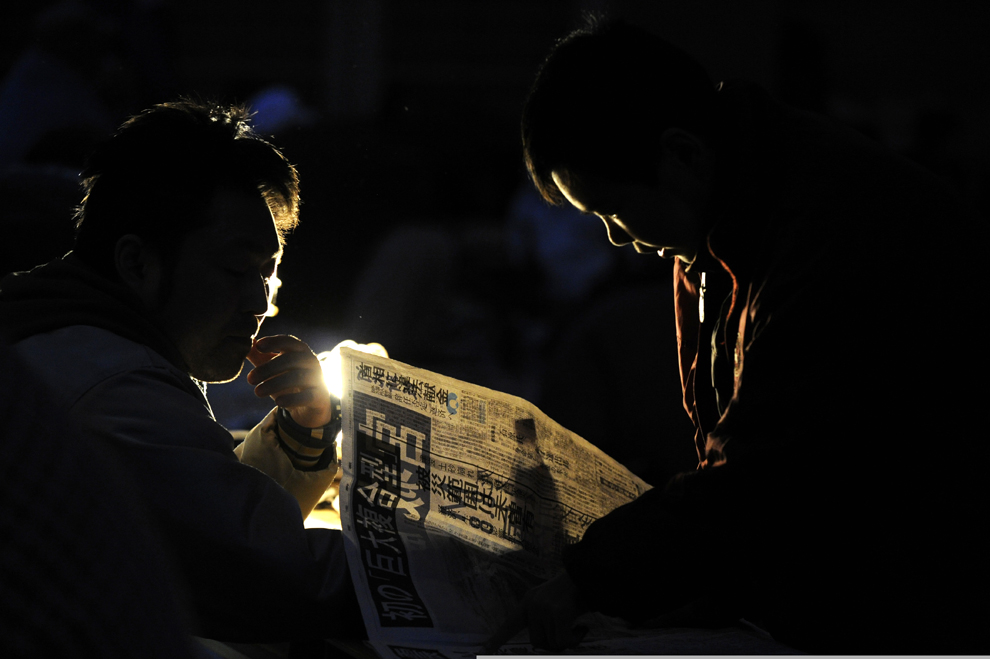
Evacuees read a newspaper carrying stories on the massive earthquake and tsunami at a shelter in Minamisanriku, Miyagi Prefecture, on March 15. Japan's government on March 15 urged people against panic-buying of food and supplies, as the country grapples with an earthquake and tsunami and resulting nuclear crisis. (Kazuhiro Nogi/AFP/Getty Images) #
|
|
| |